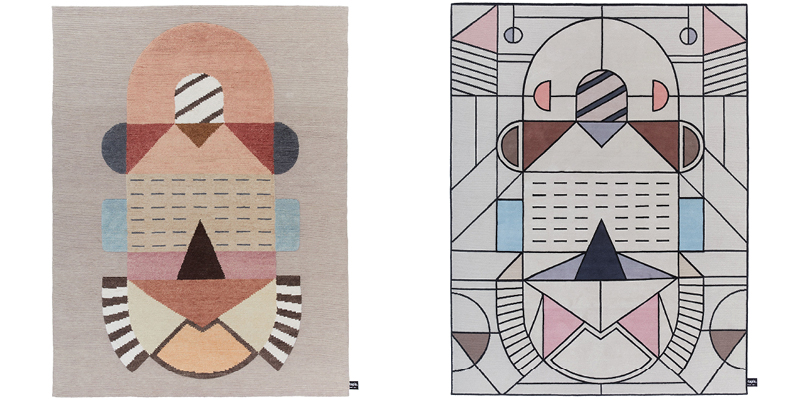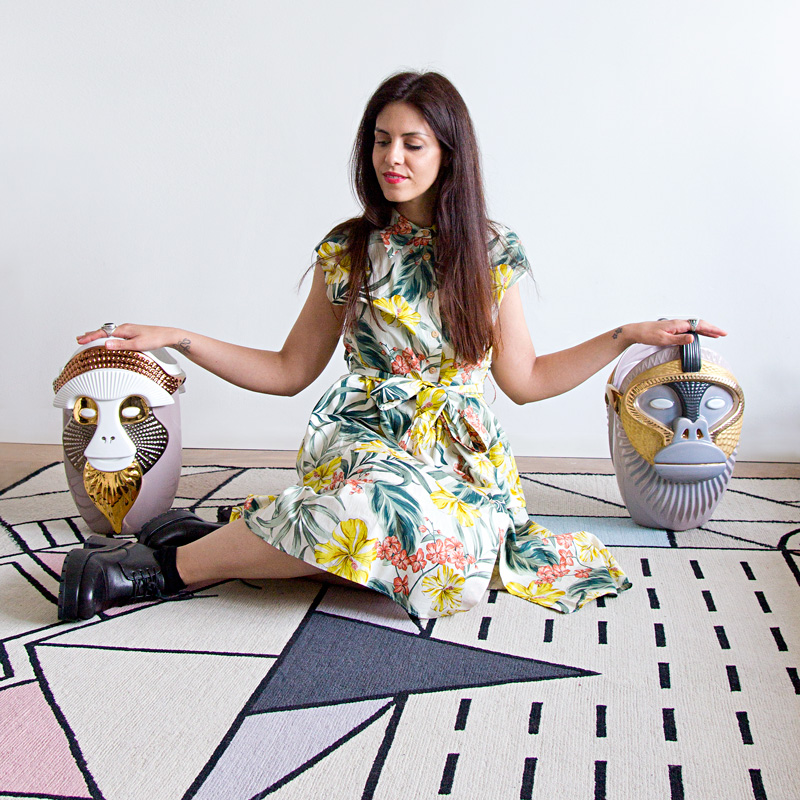
“…I believe the functional quality of an object is linked to the time and period it’s created but its emotive dimension is limitless and timeless.”
Designer Elena Salmistraro welcomes us into her Milan home, a space that oozes the warmth, color and personality of the Italian designer. We sat down to discuss her inspiration and her connection to Milan and design.
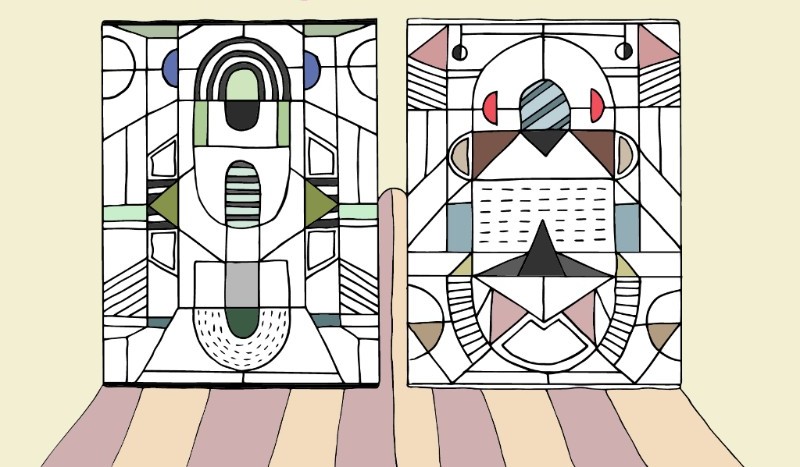
Milan is your home town. Is there any place that has been a source of inspiration for your work?
Elena: Of course. Milan is where I was born and I feel a strong connection with the city. I always want to leave, yet, I cannot be away from it. The places I am most attached to, and the ones that continue to inspire me to this day, are those linked to my childhood; the places that remind me of my carefree days of play and fun: the Navigli, the Darsena for long walks with my grandfather, but also Brera and its Pinacoteca; the Sempione park with its Art Nouveau Aquarium pavilion, the Triennale and Giorgio De Chirico’s ‘Mysterious Baths’.
Your home is also your studio, how do you balance living and working in the same space?
Actually I have a studio just down the road from my house; however in the last two years I chose to work from home to be able to look after my daughter Greta, but soon I will go back , where my small ceramics lab is waiting for me.
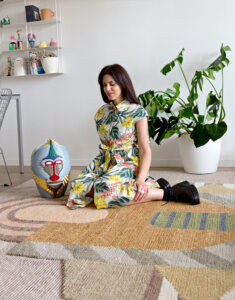
You also share your home with your husband, daughter and your wonderful objects, how do you create space for everything?
I have to admit that I don’t find the space, my husband obliges me every month to throw something away, which up to now has had very poor results. I am also a compulsive collector, I become attached to clothes, objects, sketches, designs, with the risk of filling entire rooms with objects. Every year I promise to change, but the compulsion is stronger than me, I can’t manage to resist.
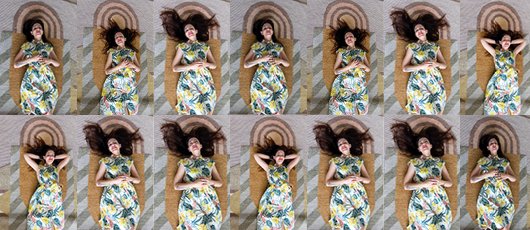
Flatlandia, your new collection for cc-tapis made of 6 rugs, can you tell us about your inspiration for the designs?
Inspiration comes from a book which I would recommend to everyone, Flatland, its a magical journey through the world of geometry, in my opinion, it’s a brilliant representation of what it means to be human, imagined in the form of geometric figures.
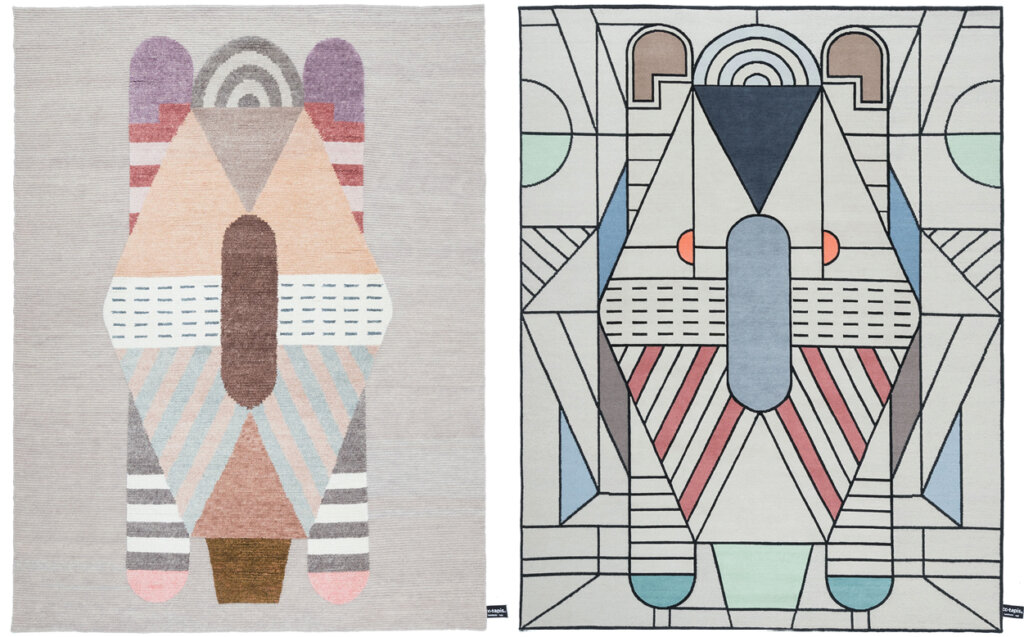
What was it like working in the world of hand-knotted rugs?
It was exciting for me to get involved in something which I didn’t fully know before. I must admit that this is the catalyst that pushed me every day to do this job, to learn and understand new concepts, to discover materials and antique techniques which can be re-interpreted in a contemporary way, this is like breathing for me. I also had the opportunity to work with cc-tapis, which manages to transform ideas and dreams into reality.
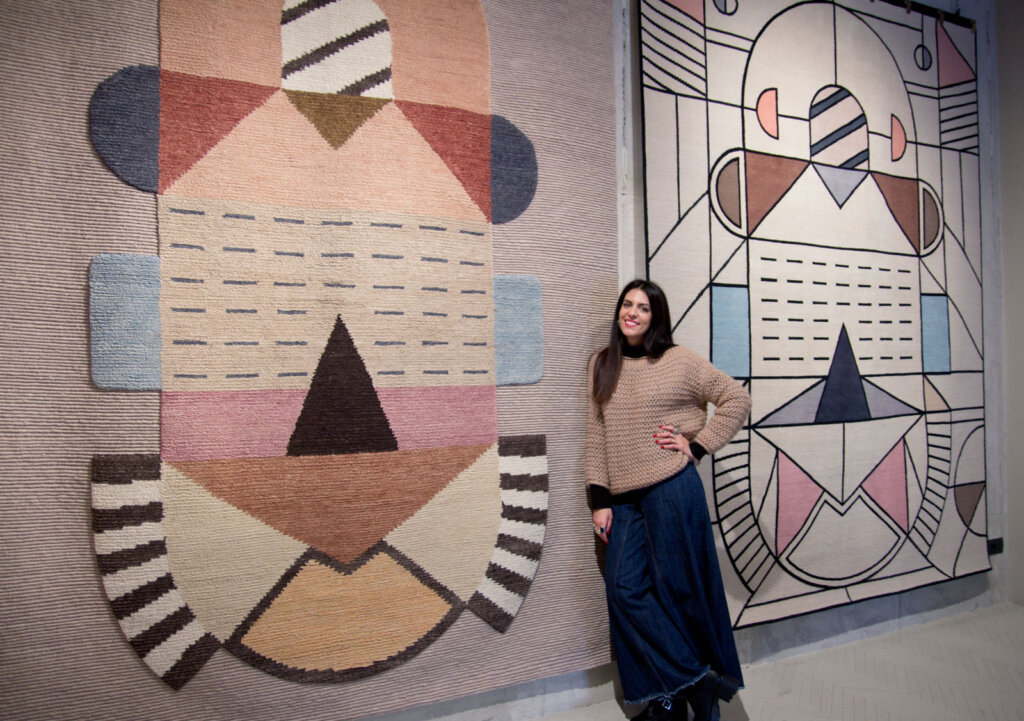
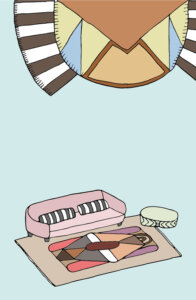
I have to admit that when Idesign, if there are no specific commission limitations, I embrace a more “artistic” approach, so I mostly rely on shapes, emotions and compositional weights and, only afterwards, I consider the functional aspect. Not because I consider functionality to be secondary, quite the contrary, but simply because I believe the functional quality of an object is linked to the time and period it’s created but its emotive dimension is limitless and timeless.
Do you like to be called an artist? What is the creative discipline that most represents you and in which can you express yourself more freely?
I want to start by saying that I am not fond of labels. I believe you can be an artist and a designer at the same time and there is no line in between. The artistic component in my work is always very much present and it unintentionally approaches, accompanies and completes my work as a designer. I love drawing; it’s my life, it’s part of me. Sometimes my drawings take shape and become real objects, other times they remain on paper or canvas, as they should. What’s important to me is putting my emotions out there, creating objects is my way to communicate.
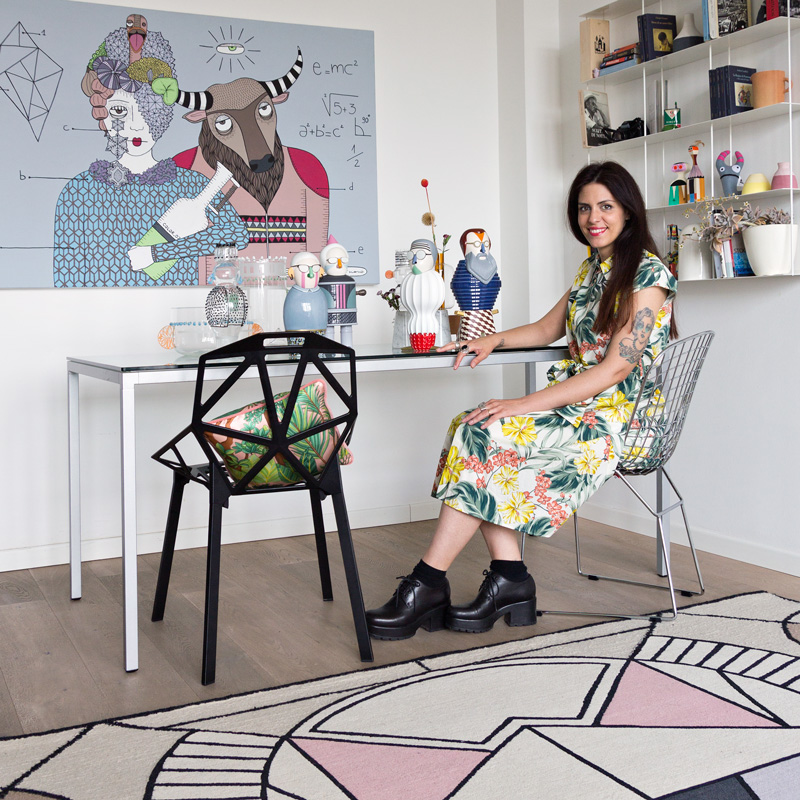
Lastly to finish-off, some quick answers of your favorite things:
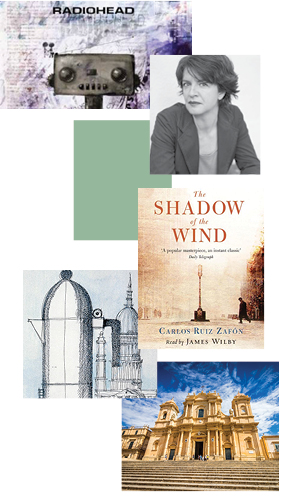
Noto in Sicily with it’s baroque style.
A designer
Hella Jongerius.
An object
La Cupola designed by Aldo Rossi.
A song
High and Dry by Radiohead.
A color
Pastel green.
A book
Shadow of the wind by Carlos Ruiz Zafon
To learn more about Elena Salmistraro check her designer profile or the Flatlandia collection.
